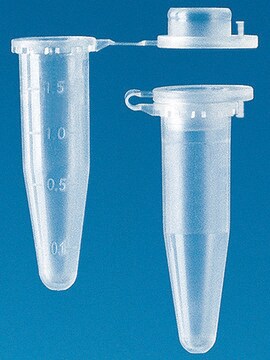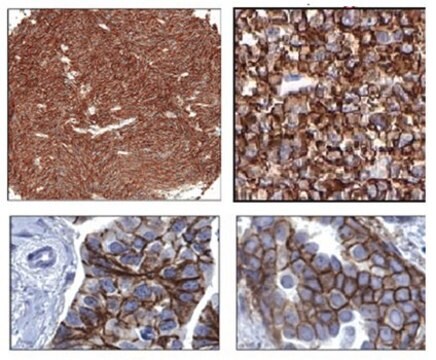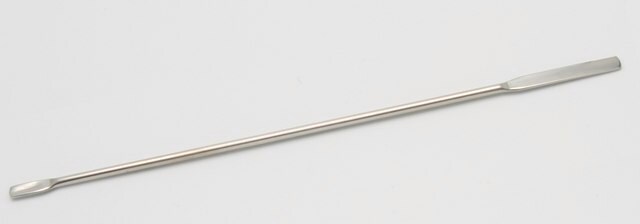General description
Killer cell lectin-like receptor subfamily C, member 1/2/3 (UniProt: Q9Z202/ Q9WTJ9/Q9QXN7; also known as Natural killer cell protein group 2-A1/ Natural killer cell protein group 2-C1, Natural killer cell receptor NKG2A/Natural killer cell receptor NKG2C/ Natural killer cell group 2E cell receptor NKG2E) are encoded by the Klrc1/2/3 genes (Gene IDs: 16641/ 16642/58179) in murine species. The NKG2 proteins are members of the lectin-like receptor family that heterodimerize with CD94 on the surface of NK and NKT cells. They are also shown to be expressed on activated CD8+ T cells. They are integral component of membrane and are present on the external side of plasma membrane. Within their extracellular carbohydrate recognition domains, NKG2A, NKG2C and NKG2E share extensive homology; however, NKG2C and NKG2E receptors differ significantly from NKG2A in their cytoplasmic domains. NKG2/CD94 heterodimeric complexes are shown to recognize Qa-1 that is described as a nonclassical MHC class I antigen. These heterodimers are reported to transduce signals following ligand binding. NKG2A is shown to be inhibitory in nature, while NKG2C and NKG2E transduce stimulatory signals. Comparatively, NKG2A is more abundant than NKG2C and NKG2E in NK cells. Murine NKG2A contains two intracytoplasmic sequences that closely resemble the Immunoreceptor Tyrosine- based Inhibitory Motif (ITIM). Clone 20D5 can be used for the identification of NK cells expressing functional CD94/NKG2 receptors and is suitable for blocking NKG2A signals in murine tumor models. (Ref.: Vance, RE., et al. (1999). J. Exp. Med. 190(12); 1801-1812).
Specificity
Clone 20D5 is a rat monoclonal antibody that detects murine Killer cell lectin-like receptor subfamily C (NKG2 A, C and E). It targets an epitope within the extracellular domain.
Immunogen
Stable Chinese hamster ovary (CHO) cells expressing the B6 alleles of CD94 and NKG2A.
Application
Quality Control Testing
Evaluated by Flow Cytometry in C57BL/6 mouse splenocytes.
Flow Cytometry Analysis: 1 μg of this antibody detected NKG2A/C/E in one million C57BL/6 mouse splenocytes.
Tested Applications
Flow Cytometry Analysis: A representative lot detected NKG2A/C/E in Flow Cytometry applications (Vance, R.E., et. al. (1999). J Exp Med. 190(12):1801-12).
Inhibition Analysis: A representative lot of this antibody completely blocked all binding of Qa-1 tetramers to NK1.11 splenocytes. (Vance, R.E., et. al. (1999). J Exp Med. 190(12):1801-12).
Note: Actual optimal working dilutions must be determined by end user as specimens, and experimental conditions may vary with the end user
Anti-NKG2A/C/E, clone 20D5, Cat. No. MABF2689, is a rat monoclonal antibody that detects Killer cell lectin-like receptor subfamily C, member 1/2/3 and is tested for use in Flow Cytometry and Inhibition Assay.
Physical form
Purified rat monoclonal antibody IgG2a in PBS without azide.
Storage and Stability
Stable for 1 year at -10°C to -25°C from date of receipt. Handling Recommendations: Upon receipt and prior to removing the cap, centrifuge the vial and gently mix the solution. Aliquot into microcentrifuge tubes and store at -20°C. Avoid repeated freeze/thaw cycles, which may damage IgG and affect product performance.
Other Notes
Concentration: Please refer to the Certificate of Analysis for the lot-specific concentration.
Disclaimer
Unless otherwise stated in our catalog or other company documentation accompanying the product(s), our products are intended for research use only and are not to be used for any other purpose, which includes but is not limited to, unauthorized commercial uses, in vitro diagnostic uses, ex vivo or in vivo therapeutic uses or any type of consumption or application to humans or animals.









